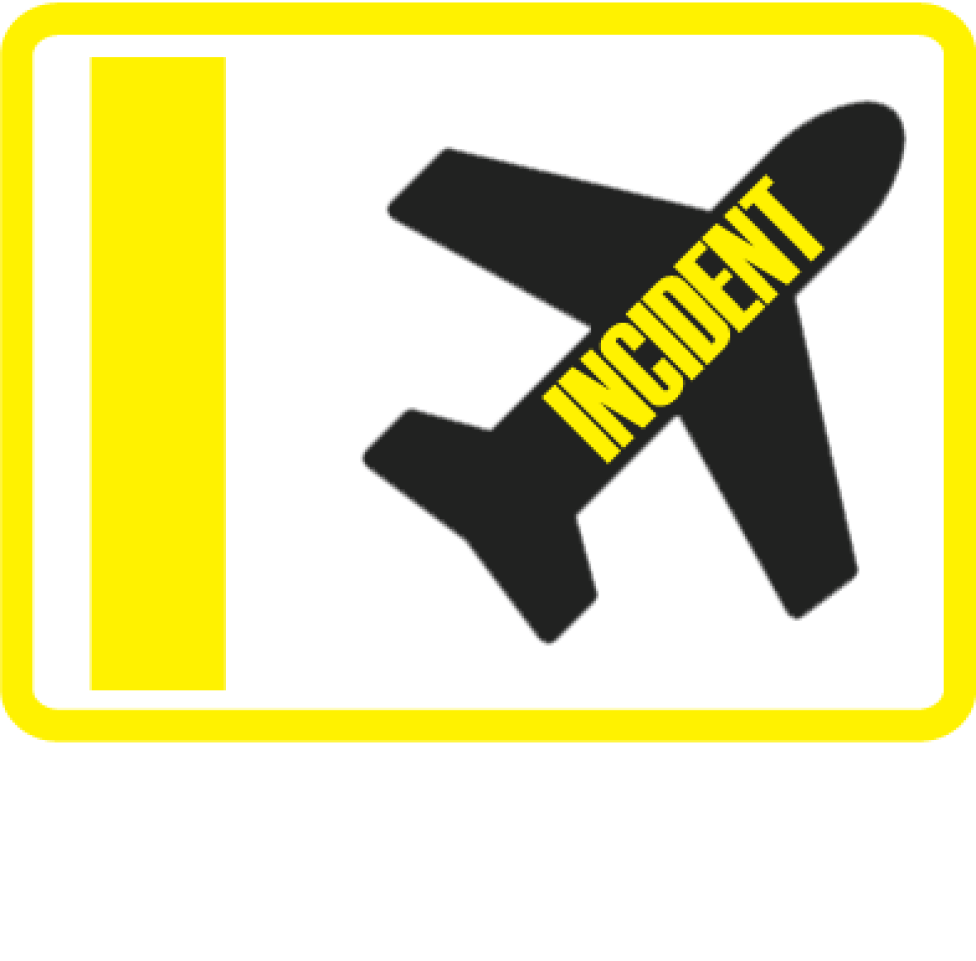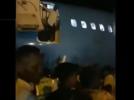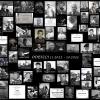ANA B738 at Shonai on Dec 8th 2012, overran runway on landing
Japan's Transportation Safety Board (JTSB) released their final report concluding the probable cause of the serious incident were:
In the serious incident, it is highly probable that the overrun occurred as the Aircraft failed to exert the expected braking force under the informed runway conditions after the landing.
It is probable that the changed runway conditions due to snowfall and other elements near freezing temperature after the snow/ice measurement negatively affected the expected braking force.
The captain (35, ATPL, 4,494 hours total, 4,272 hours on type) was pilot flying, the first officer (25, CPL, 1,014 hours total, 790 hours on type) was pilot monitoring.
The aircraft was descending towards Shonai and intercepted the localizer runway 27, winds were reported from 340 degrees at 9 knots and visibility at 4000 meters. About a minute later ATC reported visibility had dropped to 500 meters and subsequently asked whether the crew could perform a go around to permit another measurement of the snow on the runway and runway braking action. The crew agreed, climbed the aircraft to 12000 feet and entered a holding pattern over Shonai VOR.
About 25 minutes later the winds were reported at 3 knots from 020 degrees and runway 09 was reported active, braking action was reported good all across the runway. 30 minutes after the go around the runway re-opened, the crew requested an ILS approach to runway 09. The aircraft intercepted the localizer runway 09 when the winds were reported from 320 degrees at 13 knots, when the crew set the flaps to 30 degrees ATC reported the winds from 310 degrees at 11 knots. At 408 feet AGL the autopilot was disengaged at 142 KIAS and a computed speed over ground of 154 knots. The aircraft touched down at 140 KIAS, 147 knots over ground, about 480 meters past the runway threshold within the touch down zone, one second after main gear touch down autobrakes activated, the speedbrakes deployed and the thrust reversers were opened and the engines accelerated to maximum reverse thrust, the aircraft reached a maximum deceleration of -0.27G, autobrakes reduced the acceleration to -0.22G, the airspeed had reduced to 116 KIAS (127 knots over ground). The deceleration rate remained constant at -0.22G. About 500 meters before the end of the runway the first officer called 60 knots, the captain disengaged autobrakes, the thrust reversers were stowed at 59 KIAS (70 knots over ground). The brakes pressure began to oscillate with increasing amplitudes and reached a maximum of 3000 psi at 230 meters before the runway end, 45 KIAS (54 knots over ground), the brakes pressure now remained at the maximum of 3000 psi until stand still. The captain commented "This is no good", then "Oh no, we can't stop", the thrust reversers were deployed again and engines began to accelerate to maximum reverse thrust 80 meters before the runway end, deceleration had reduced to less than -0.1G. The aircraft overran the end of the runway and crossed the end of the runway overrun area at 18 knots over ground. After departing the runway/overrun surface the decelerating sharpy increased to -0.2G, the engines reached their maximum reverse power increasing the deceleration further to -0.34G and the aircraft came to a stop. After the aircraft came to a stop the thrust reversers were selected stowed again and the engines spooled down to idle. The captain instructed the first officer "report overrun", ATC was advised they were unable to taxi due to an overrun.
The JTSB reported that at the time, when the flight was vectored for the first approach the snow team had completed clearing the runway, the runway was "wet and normal" at that time, and the snow team returned to their office. When they entered the office, the aircraft was on far final approach, it began to snow so hard, that the snow team no longer could see the runway from the office, the snow was unlikely to melt, and the runway was quickly covered with a blanket of snow, the snow team decided to perform another clearing of the runway. The northern half of the runway was cleared first towards the east, then the southern half of the runway was cleared moving west. Following the snow removal the snow depth was assessed at 2mm, not slush. The snow fall had reduced.
The JTSB calculated the actual runway friction at 0.08 (medium to poor) during manual braking based on the quick access recorder data. At this value the aircraft would have needed 6,646 feet to stop (poor braking action: 7,807 feet, medium braking action 6,113 feet).
The JTSB analysed that while holding to permit snow removal following the first approach the crew was informed about the winds weakening and changing to Northeast prompting the crew to opt for runway 09. While on the approach the winds however changed again to northwest, the crew assessed however that this did not impair the aircraft performance and decided to continue the landing. The aircraft landed with a tailwind component of 9 knots and a left cross wind component of 18 knots.
The JTSB analysed that the significant delay, 45 minutes, did not contribute to the commander's decision to continue the landing.
The JTSB analysed that following the assessment by the snow team, that the snow was not slush, the runway conditions changed. At the time of touch down, observations by the crew suggest that the thin cover of the runway had partially melted and changed to a slushy condition. The tyre conditions after landing, showing slight localised degradation of the tyres, were the result of hydroplaning, that occurred at an extremely slow speed.
The aircraft decelerated normally initially, the brake pressure increase applied by automatic brakes indicated loss of brakes effectivity but was still able to maintain a constant deceleration of -0.22G.
When the captain decided to disangage the autobrakes, a brief rise of brakes pressure probably indicates the manual application of brakes to disengage the automatic brakes. A subsequent sudden drop of brakes pressure suggests the captain released the brakes to permit the tyres to gain traction again suspecting the tyres were slipping.
The JTSB analysed that had the runway friction been 0.08 throughout the runway, maximum manual as well as maximum automatic braking would not have been prevented a runway overrun and stated: "Therefore, longer use of the thrust reversers than usual could have possibly shortened the landing stopping distance."
The JTSB analysed: "it is probable that the runway conditions at the time of the landing of the Aircraft were such that the braking action was lower than informed braking action “Good.” Conceivable operations for shorter landing role than that at the time of the serious incident are: reduced approach velocity with the flap position set to “40”; setting the autobrakes to “MAX” and using the autobrakes for sufficiently a long time; and using the thrust reversers for longer time. On slippery runways in particular, there are cases where wheel brakes cannot demonstrate the expected performance. In order for an immediate use the thrust reversers on such an occasion, it is probably necessary to hold the reverse thrust levers in the “Idle” position not returning them to the “Down” position. It is difficult to conduct a real-time snow/ice condition assessment for a landing. Therefore, in circumstances where drastic weather changes are expected, it is probably desirable to assume a more severe situation than the informed braking action establishing a safer approach configuration with post-landing stopping actions."
http://avherald.com/h?article=45a43c73/0000














Komentarze